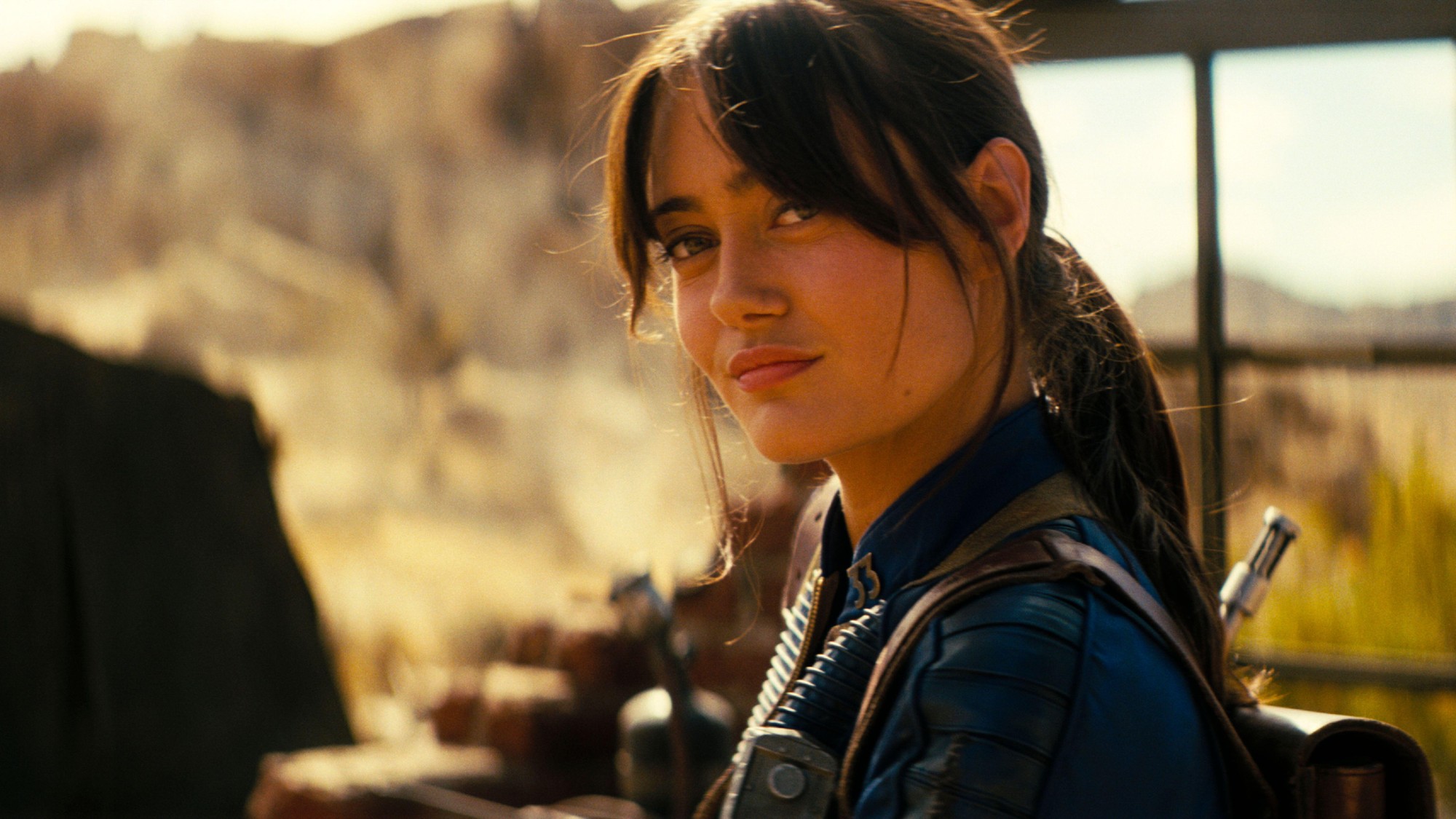Why transparent wood offers 'promising future' for the environment
New techniques that change structure of material could mean tougher and more efficient windows and phone screens

Can't see the wood for the trees? Scientists are increasingly modifying wood to make it transparent, offering a range of environmental benefits for the planet.
Wood has been used for construction and furniture for thousands of years, thanks to its "versatility, renewability and aesthetic appeal", said the University of Maryland researchers in the latest Annual Review of Materials Research. Now, as the climate crisis and resource scarcity accelerate interest in sustainable materials, scientists are devising methods to chemically or physically modify the structure of wood.
These advancements "open the door" to potentially replacing non-renewable materials, said Interesting Engineering. Transparent wood could soon be used in "super-strong screens for smartphones", said Knowable Magazine, as well as "in soft, glowing light fixtures" and even "color-changing windows".
The Week
Escape your echo chamber. Get the facts behind the news, plus analysis from multiple perspectives.

Sign up for The Week's Free Newsletters
From our morning news briefing to a weekly Good News Newsletter, get the best of The Week delivered directly to your inbox.
From our morning news briefing to a weekly Good News Newsletter, get the best of The Week delivered directly to your inbox.
"I truly believe this material has a promising future," said Qiliang Fu, a wood nanotechnologist at Nanjing Forestry University in China.
What happened?
In 1992, a German botanist named Siegfried Fink "had a simple wish", said Jude Coleman in Knowable Magazine: "to see the inner workings of woody plants without dissecting them".
By bleaching away pigments in plant cells, he managed to create "transparent wood", publishing his technique in "a niche wood technology journal". That paper "remained the last word on see-through wood for more than a decade", until Swedish materials scientist Lars Berglund "stumbled across it", said Coleman.
Berglund, of the KTH Royal Institute of Technology in Sweden, was interested in using the technique to create "a more robust alternative to transparent plastic". In the US, researchers at the University of Maryland were busy on "a related goal". Three decades later, the research of both groups is "starting to bear fruit".
A free daily email with the biggest news stories of the day – and the best features from TheWeek.com
How does it work?
Wood is made up of "countless little vertical channels", said Coleman, like "a tight bundle of straws bound together with glue", which transport water through the tree.
Scientists can remove the glue – or lignin – that holds the bundles together and gives branches their brown hues. When you bleach lignin's colour away or remove it, a "milky-white skeleton of hollow cells remains". It is still opaque, but filling those hollow cells with a substance like epoxy resin bends light differently, rendering the wood transparent.
The process previously involved soaking away the lignin with sodium chlorite, explained New Scientist. But this is wasteful, chemical-intensive, and can weaken the wood.
In 2021, the Maryland researchers came up with a method to modify the lignin, rather than removing it, which is "quicker and uses fewer materials", as well as leaving the wood stronger.
This moved the world "a step closer to windows that are far better insulators than traditional glass ones", said New Scientist.
What could we use it for?
Transparent wood is about three times stronger than transparent plastics like Plexiglass, and about 10 times tougher than glass. That makes it an excellent alternative to products made from thin, easily shattered plastic or glass – such as phone screens.
Transparent wood modified under the newer method "allows more than 90 per cent of light to pass through it", said New Scientist, and is more than 50 times stronger than transparent wood with the lignin completely removed.
"It could be used for load-bearing windows and roofs," said materials scientist Liangbing Hu, who leads the Maryland research group.
Transparent wood could also help regulate heat more efficiently, according to a study by the RISE Research Institutes of Sweden in March. The researchers developed a wood composite thermal battery, capable of storing both heat and cold.
Modifying wood "will provide the basis for a range of new wood-based materials", said the Maryland researchers in their report – "or a carbon-neutral future."
Harriet Marsden is a senior staff writer and podcast panellist for The Week, covering world news and writing the weekly Global Digest newsletter. Before joining the site in 2023, she was a freelance journalist for seven years, working for The Guardian, The Times and The Independent among others, and regularly appearing on radio shows. In 2021, she was awarded the “journalist-at-large” fellowship by the Local Trust charity, and spent a year travelling independently to some of England’s most deprived areas to write about community activism. She has a master’s in international journalism from City University, and has also worked in Bolivia, Colombia and Spain.
-
 Can Mike Johnson keep his job?
Can Mike Johnson keep his job?Today's Big Question GOP women come after the House leader
-
 A postapocalyptic trip to Sin City, a peek inside Taylor Swift’s “Eras” tour, and an explicit hockey romance in December TV
A postapocalyptic trip to Sin City, a peek inside Taylor Swift’s “Eras” tour, and an explicit hockey romance in December TVthe week recommends This month’s new television releases include ‘Fallout,’ ‘Taylor Swift: The End Of An Era’ and ‘Heated Rivalry’
-
 ‘These accounts clearly are designed as a capitalist alternative’
‘These accounts clearly are designed as a capitalist alternative’Instant Opinion Opinion, comment and editorials of the day
-
 Femicide: Italy’s newest crime
Femicide: Italy’s newest crimeThe Explainer Landmark law to criminalise murder of a woman as an ‘act of hatred’ or ‘subjugation’ but critics say Italy is still deeply patriarchal
-
 Brazil’s Bolsonaro behind bars after appeals run out
Brazil’s Bolsonaro behind bars after appeals run outSpeed Read He will serve 27 years in prison
-
 Americans traveling abroad face renewed criticism in the Trump era
Americans traveling abroad face renewed criticism in the Trump eraThe Explainer Some of Trump’s behavior has Americans being questioned
-
 Cop30: is the UN climate summit over before it begins?
Cop30: is the UN climate summit over before it begins?Today’s Big Question Trump administration will not send any high-level representatives, while most nations failed to submit updated plans for cutting greenhouse gas emissions
-
 Nigeria confused by Trump invasion threat
Nigeria confused by Trump invasion threatSpeed Read Trump has claimed the country is persecuting Christians
-
 Sudan stands on the brink of another national schism
Sudan stands on the brink of another national schismThe Explainer With tens of thousands dead and millions displaced, one of Africa’s most severe outbreaks of sectarian violence is poised to take a dramatic turn for the worse
-
 Sanae Takaichi: Japan’s Iron Lady set to be the country’s first woman prime minister
Sanae Takaichi: Japan’s Iron Lady set to be the country’s first woman prime ministerIn the Spotlight Takaichi is a member of Japan’s conservative, nationalist Liberal Democratic Party
-
 Youth revolts rattle Morocco as calls against corruption grow louder
Youth revolts rattle Morocco as calls against corruption grow louderTHE EXPLAINER Snowballing controversy over World Cup construction and civic services has become a serious threat to Morocco’s political stability